African masks are props used in ceremonies and rituals and they have great religious, mystical and spiritual importance for many African peoples.
In these ceremonies, the masks are intended to establish contact with the spiritual world and with the gods.
African masks, also called tribal masks, are a tradition in African countries. Sub-Saharan Africa, located south of the Sahara Desert.
This African art became known around the world for influencing works by European artists from the beginning of the 20th century, such as Pablo Picasso and Henri Matisse.
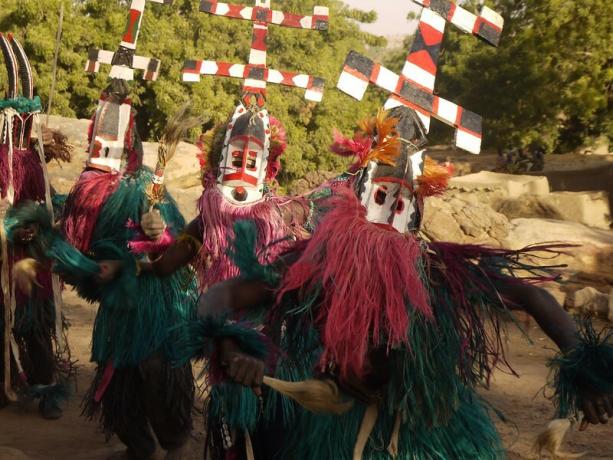
Dance ritual with mask of the people dogon in Mali. Image: Gina Gleeson, Flickr.
African masks and their meanings
For each ethnicity, masks have their own meanings and are used in different celebrations and rituals. Masks can be used as thanks for:
- Good harvests;
- Abundance and prosperity;
- Dispute Resolution;
- Victory in wars and conflicts.
Also, masks can symbolize moral values, like:
- Humility;
- perseverance;
- courage;
- strength;
- wisdom.
Masks are used in celebration ceremonies and initiation rituals and weddings, births and funerals, in preparation for war ceremonies and rituals to cast out evil spirits.
The meanings of different African masks
Each ethnic group can have different masks, each with different meanings and uses. Discover some of the main African masks and understand their meanings.
masks Bwa (Burkina Faso)
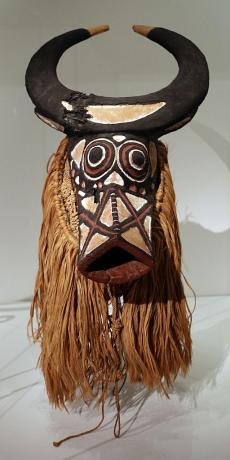 Bwa Mask.
Bwa Mask.
The people Bwa gives Burkina Faso, a West African country, uses animal masks to evoke their spirits, some of the animals depicted in their masks are crocodiles, buffaloes and falcons.
The zigzag lines represent the difficulties that the ancestors encountered in their paths and the black and white paintings represent the opposites: light and darkness, wisdom and ignorance, man and women.
masks Kanaga (Mali)
 Mask Kanaga.
Mask Kanaga.
One of the most famous masks of the people dogon of mali and the Kanaga, a mask used in a ritual called lady, carried out to ensure the safe passage of spirits to the world of the ancestors.
The face of these masks is rectangular and has bars that form two crosses on top of the head. The top and bottom bars represent a bird and God's creative force and can also represent heaven and earth.
masks Bamana (Mali)
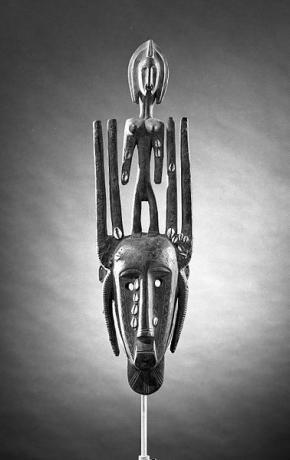 Mask Bamana.
Mask Bamana.
The people Bamana of mali uses the representation of antelopes in their masks. These people have a strong agricultural tradition and their belief is that it was the antelope who taught their ancestors to plant.
Antelope masks have several horns that protrude from the top of the animal's head, these horns symbolize the birth of plants from the grain. These masks are used in initiation rituals.
masks Baule (Costa do Marfim)
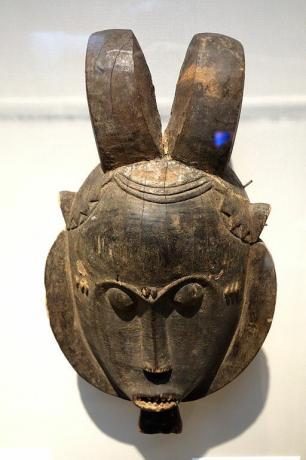
Mask Baule.
The people Baule gives Costa do Marfim have a strong tradition in masks. In one of their celebrations, called Goli, these people wear round masks that symbolize the sun and have two buffalo horns, which represent the strength of this animal.
This mask is also used at harvest festivals, on occasions that receive important visitors or at funerals of influential people in the community.
masks punu (Gabon)
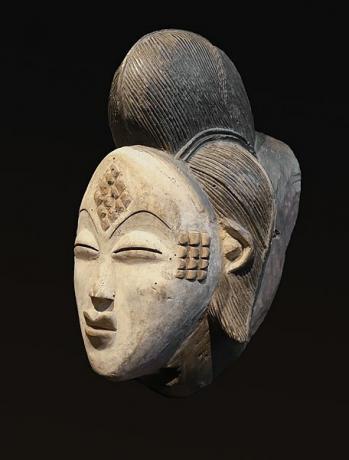 Mask punu.
Mask punu.
the masks of the people punu of Gabon represent women's faces, usually with scarifications - a technique used to leave scars on the skin. The hair of the mask resembles the hair of the women of the tribe.
This mask was used in funerals and magical rituals and represents an idealized image of the ancestors. The white of the mask symbolizes peace, deities, dead spirits and the afterlife.
masks Berry (Guinea)
 Mask Berry.
Mask Berry.
The people Berry gives guinea uses masks that represent the feminine beauty in the breasts and scars on the face. The breasts are elongated and flat to symbolize the many years of breastfeeding.
Many of the masks with women's faces of this people are represented with the traditional braids that African people make in their hair. for the people Berry, women's masks can only be used by men in rituals.
masks Screen (Democratic Republic of Congo)
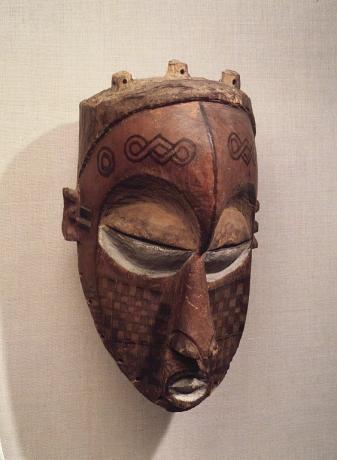 Mask Screen.
Mask Screen.
The people Screen, who lives in Democratic Republic of Congo, uses masks in their tribal and circumcision rituals. Their masks are usually red and this color is obtained with tukula powder, extracted from a tree known as African sandalwood.
masks Kpelie (Western Africa)
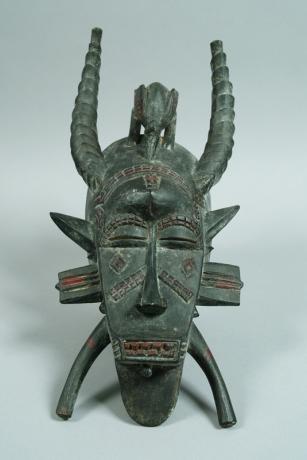 Mask Kpelie.
Mask Kpelie.
The people Senufus it is formed by diverse ethnic groups that live in regions of the countries of Côte d'Ivoire, Mali, Burkina Faso and Ghana. One of their traditional masks is the Kpelie, which represents a woman.
This mask is used by men in initiation rituals, funerals and harvest celebrations, it symbolizes feminine beauty and fertility.
masks Kuba (Democratic Republic of Congo)
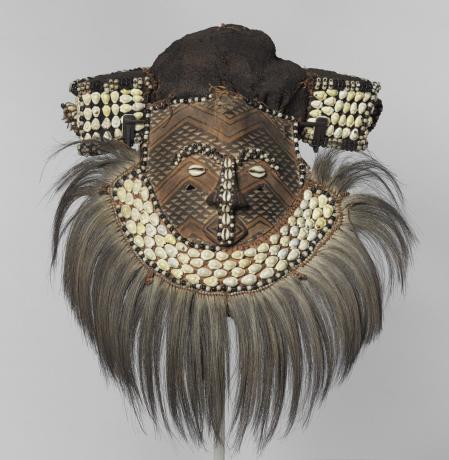 Mask Kuba.
Mask Kuba.
The people Kuba it has more than 20 masks used in initiation rituals and celebrations and one of the most important masks is the Mwaash Ambooy, which represents real power.
This mask is used only by the king and local chiefs and according to traditions, it symbolizes the Woot, a founding hero whose people Kuba believes to be descendant.
masks Dan (Costa do Marfim)
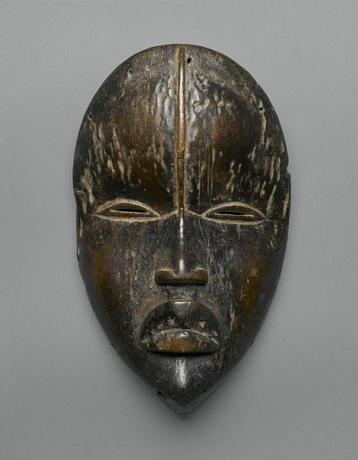 Mask Dan.
Mask Dan.
The people Dan gives Costa do Marfim has hunting and agricultural traditions and believes that there are two worlds: the human world and the spiritual world.
For them masks are inhabited by spiritual forces and are used as protection and communication with the spiritual world. Their masks are carved from wood and represent human faces.
masks kota (Gabon)
 Mask kota.
Mask kota.
The people kota of Gabon he carved his masks out of wood and covered them with copper and brass plates to increase their power. The face of the masks of the kota they are oval-shaped and their body forms a diamond.
the masks kota are known as emboli or mbutus and are used in boys' initiation ceremonies. During the ritual, the elders show the young people that the masks are human beings like them.
masks fang (Central Africa)
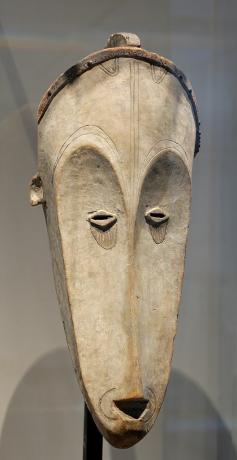 Mask fang.
Mask fang.
You fang are an ethnic group located in an area spanning Equatorial Guinea, northern Gabon and southern Cameroon. One of his famous masks, called Ngil, was used in their secret societies.
the masks Ngil they were used by men in rituals for the initiation of new members and for the persecution of evildoers. These masks were painted white, had a long face and a thin nose.
masks Kwel (Western Africa)
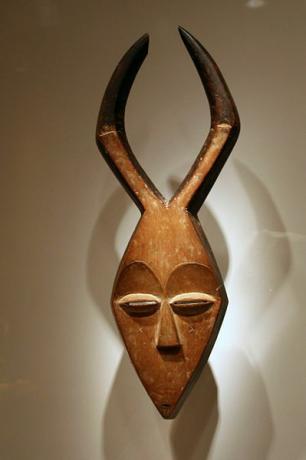 Mask Kwel.
Mask Kwel.
The people Kwel, who lives in regions of Gabon, the Democratic Republic of Congo and Cameroon, believed in witchcraft and blamed witches for all the social and personal ills they face.
To protect themselves from witchcraft, they performed a ritual called beet, during which they performed the purification of the spirits. The masks have horns and represent an antelope, whose meat was eaten at the end of the ritual.
masks teke (Democratic Republic of Congo)
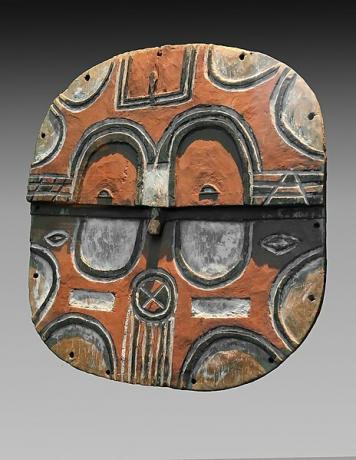 Mask teke.
Mask teke.
the masks of the people teke gives Democratic Republic of Congo they are used in ceremonies such as weddings, funerals and initiation rites. They can also be used to identify members with superior social and political status.
the masks teke they are rounded and flat, painted with geometric shapes and made of wood.
History of African masks
Masks have been traditions of African peoples for thousands of years. It is believed that since the Paleolithic Period, which began about 2.5 million years ago, masks are used by the people of the region.
Masks have important religious and spiritual meanings. They are used in rituals (usually by men) and serve to establish the connection with ancestors and other divine beings.
In these rituals, the person wearing the mask goes into a trance and establishes contact with these spirits. Sometimes a sage or a translator accompanies this person to translate the sent messages.
Rituals are accompanied by songs sung and played on traditional instruments and with dances. In addition to the mask, the costumes that cover the body serve to preserve the person's identity and ensure that the essence of the spirit is captured.
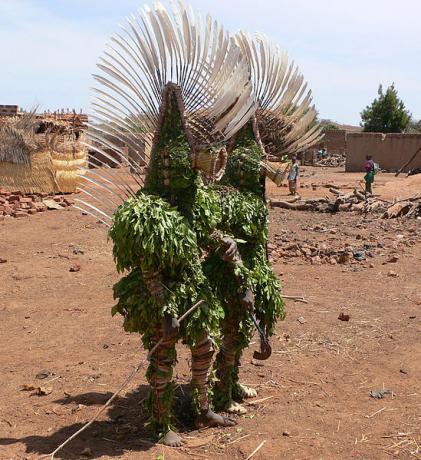 Masks and costumes of the people Bwa from the village of beautiful, in Burkina Faso.
Masks and costumes of the people Bwa from the village of beautiful, in Burkina Faso.
How are African masks made?
The African masks used in rituals and celebrations are sacred elements and are made by people designated for this function. The trade of making masks is usually passed from generation to generation.
In addition to the technical knowledge to make the masks, it is believed that these people are able to feel the power of the spirits in the materials used and in their tools, so these must be handled with caution.
Most masks are made of wood, which are carved with sharp knives. For these peoples, trees have a spirit and before cutting them it is necessary to perform purification and sacrifice rituals.
The ornaments on the masks are made with dyes, horns, seeds, teeth, pieces of leather and cloth. In addition to wood, it is also common to find masks made of ivory, ceramics and metals such as copper and bronze.
see the Definition of African Culture.


